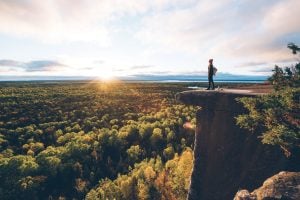We can tell a lot about how the world changes with land cover change maps, the 2010-2015 update of which was published in November 2020 by the North American Land Change Monitoring System — an initiative of the Commission for Environmental Cooperation.
These maps tell a story of a changing world, with major events altering the landscape. The large areas around Yellowknife depict land cover transition from forest to mainly grassland and barren lands, thanks to the 2014 forest fires in the surrounding area. Unusually warm conditions and lack of rain triggered more than 130 forest fires in the Great Slave Lake region in the Northwest Territories. The forest fire season for that year has been classified as one of the most extreme in the region over the last three decades, with lasting impacts on vegetation and wildlife as well as human populations.
The maps, created from a composite of images assembled from satellite observations at a 30-metre spatial resolution, are the result of a collaborative effort that harmonized land cover classification systems from Canada, Mexico and the United States — no small feat, according to the team working on the project.
“We are, in a way, the forum through which the mapping agencies come together,” says Orlando Cabrera-Rivera, head of unit for environmental quality for CEC, which oversees the NALCMS initiative. “We put together the continental product based on what [each organization] is doing at home.”
The goal is to produce a map that’s useful for “addressing issues at the continental level,” says Cabrera-Rivera.
“Watersheds, ecosystems … they don’t know political boundaries. We need to be managing these at the continental level.”
But Zakir Jafry, environmental information coordinator and GIS specialist at the CEC, says the NALCMS group is very open and collaborative and that all the scientists involved see the bigger picture.
Jafry also says putting the maps together requires a lot of processing and conversations — sometimes there are “mismatches” in land use designations that require some back and forth.
“In B.C. and Washington for example, on the B.C. side you have a lot of activity but in Washington it’s just forest,” says Jafry. “In Canada that area is being used for skiing, but in the U.S. it has protective status. We have to adjust those misclassifications.”
One of the biggest transitions seen in the data is forest loss, which Jafry says is mostly occurring in Canada.
“Impacts of wildlife, insects, logging … you can see those changes occurring.”
Cabrera-Rivera says now the work begins to see how to use the data to prevent or control changes in the future — to mitigate damages we might be inflicting on the earth.
“We have to look at these changes and the consequences that they have,” says Cabrera-Rivera. “We’re all connected through the environment in which we live, despite countries and borders.





